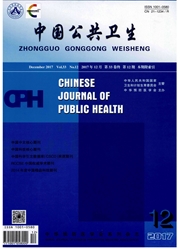

 中文摘要:
中文摘要:
目的探索引物末端3′端不同碱基对聚合酶链反应产物的影响。方法以含有乙肝病毒(HBV)完整基因组的重组质粒pUC-19为模板,利用3′端碱基分别为A,T,C,G的下游引物,在相同的上游引物和退火温度下进行聚合酶链反应。结果不同的反应体系在相同退火温度下目的产物和引物二聚体形成不同 A表示上游引物,P表示下游引物 下游引物共计4条,分别用P1、P2、P3、P4表示,其3′端碱基分别为T,G,A,C。上下游引物共4对,分别用AP1、AP2、AP3、AP4表示 退火温度为50℃时,AP1和AP4有明显的扩增产物,AP3扩增产物稍少,AP2产物肉眼观察不到,有非特异性产物生成 退火温度升至55℃时,AP1和AP2有明显的扩增产物,AP4少量扩增产物,P3产物肉眼观察不到,AP1和AP4反应体系引物二聚体生成情况基本相同,AP2和AP3引物二聚体生成较少 退火温度升至62℃时,AP1和AP2有明显的扩增产物,AP4扩增产物稍少,AP3产物肉眼观察不到,可观察到引物二聚体生成稍多。结论3′端不同碱基对聚合酶链反应产物有很大影响。
 英文摘要:
英文摘要:
Objective To explore the effects of different bases at 3' end of the primer on products of polymerase chain reaction. Methods HBV gene was amplified by PCR in the same forward primer and anneal temperature. Recombinant plasmid pUC-19 carrying whole HBV genome was used as a template and the base at the 3' end of the reverse primer was T ( AP1 ), G ( AP2), A ( AP3 ), and C ( AP4 ), respectively. Results The form of production and primer-dimer of different reaction systems in the same anneal temperature were different. When anneal temperature was 50 ℃ ,reaction systems of AP1 and AP4 had visible amplification products. AP3 had small quantities of amplification products. Amplification products of AP2 could not be observed and non-specific products were generated. When anneal temperature was 55 ℃,reaction systems of AP1 and AP2 had visible amplification products; AP4 had small quantities of amplification products. Amplification products of AP2 could not be observed. Reaction systems of AP1 and AP4 had the same quantities of primer dimers. Reaction systems of AP2 and AP3 had less primer dimers. When anneal temperature rised to 62 ℃ ,reaction systems of AP1 and AP2 had visible amplification products and AP4 had small quantifies of amplification products. Amplification products of AP3 could not be observed,while primer dimers coulde be observed. Conclusion The different bases at 3' end of the primer effectes deeply on products of PCR.
 同期刊论文项目
同期刊论文项目
 同项目期刊论文
同项目期刊论文
 期刊信息
期刊信息
